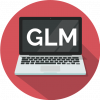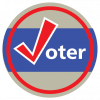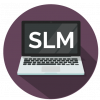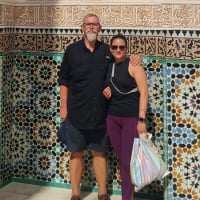Making hard copy board books

Hey, all. I compile hard copy books for our board that include applications submitted, attachments, and staff evaluation. I do a fair amount of editing to present the application information to the board in the fashion they have requested. My work around to edit and publish a hard copy of the applications and assorted attachments has become very cumbersome. (I understand that the solution to my problem is to get my board online to review the applications in the way the platform is designed to work, but this is never going to happen, they want a hard copy book.) I'm looking into designing a template in Foundant to arrange all the application information, attachments and staff evaluations in the style they prefer. I'm wondering if anyone else has worked their way through this and if so, what tips, tricks or obstacles came up? Thank you.
Comments
-
We have the same challenge--our board prefers the hard copy book as well. I'm fairly new to the Foundant system, but I have set up and run merged documents for insertion into the board book to avoid a large data dump, some of that unneeded information. I run a proposal summary page, which includes a project title, summary, committee comments, and a budget summary chart. I've also created a merge proposal page to include all the pertinent information form the application. I still spend quite a bit of time touching up all these pages and inserting supporting documents, but I'm hoping to learn more time saving tools as I go along. This topic would be a great learning webinar from Foundant to many of us!
Anita Forester, Grant Programs Administrator
Fish & Wildlife Foundation of Florida
2 -
@CullynAnderson and @AnitaForester
I know this doesn't answer what you are asking. But...
While I understand why some board members would feel that way (about keeping the hard copy process), I have to admit that I am lucky to have a grant committee that has fully embraced the online review process, including some who are not very technology savvy. But then, we're pretty small and have worked our way up from them reading the applications in board book without staff evaluation. My committee has preferred to review the applications themselves and make the decisions without staff making recommendations (though I do get asked for my opinions and inside information that can sway a decision.)
Their approach (and mine) has been:
1) the online review process saves copy costs and paper. For us that was a big selling point on purchasing the software. But the committee members are not flipping back and forth from the evaluation form to the applications. And they don't have to lug around a large notebook. And all of them are happy we aren't using (and recycling) all that paper.
2) We do the side-by-side evaluations so they can see the application and the evaluation scoring rubric. Also, I match the evaluation scoring rubric to the outline of the application so it is easy to follow and doesn't jump them around.
3) The evaluator dashboard helps them know what they've completed and what they have remaining at a glance.
4) Once all the applications are scored, I run a report that includes pertinent info, scores and comments (I only allow 1 comment section at the end of the evaluation form). The report is compiled with one row per evaluator - but I do not include the evaluators names so no one knows who scored what or commented what) and grouped by grant process and by organization/project. I also aggregate the scores for an overall percentage so that it makes the ranking easier.
5) We still meet together (by zoom over the past year) and discuss the merits of the various applications and committee members can make a case for what they see that someone else didn't, etc.
6) It has helped our meetings flow more quickly. Often with the paper version, some of the committee members wouldn't actually fill out the evaluation score forms, so when we got to the meetings they would hem and haw and rehash everything.
7) I did some good training with them on using the system. We just finished our second scholarship process. Last year we did our Emergency Fund - which met weekly for most of the summer and then bi-weekly to monthly through December. We did one discretionary round in October and are getting ready for our summer round this year.
8) I almost forgot - another big plus in favor of the online review : it takes less time for them to get the applications for review and gives them more time to review before the deadline to review (so I can do the evaluation summary reports.) It streamlines our process.
I hope you find a process that works for you without making more work for you...
Happy almost weekend!
Bettie
Bettie Stammerjohn
Executive Director
Community Foundation of Greene County, Pennsylvania
4 -
Recently I was chair of a national board. All documents were shared through an online board portal. We convinced our board members that this was more time effective for our staff and conserved resources.
I would never go back to the old way.
One man's opinion.
Kent C. Weimer
1 -
I totally feel your pain with hard copy board binders! Thankfully we have moved to an online platform, but I have a few tips you may be able to use.
Using the Merge Template in GLM, I created an Application Summary that pulls only the relevant information for the Board. This keeps me from having to print the entire package. I have the Application set up for applicants to upload necessary documents within the application and those can also be pulled into my Application Summary. This way I can pull the Application Summary once and everything needed for the Board packet pertaining to the application is all together.
I save those as a pdf for my online document but for hard copy binders I would print one master set of each application summary and the utilize 2 sided copy to reduce the amount of paper needed.
We currently use DirectorPoint for our online binders. It was a difficult change for some of our Trustees but it has a "Print All" option so I believe some of them just dump the entire thing whenever its ready.
I hope this helps in some way.
Joyce Brasher, The Daniel Foundation of Alabama (joyce@df-al.com)
3










